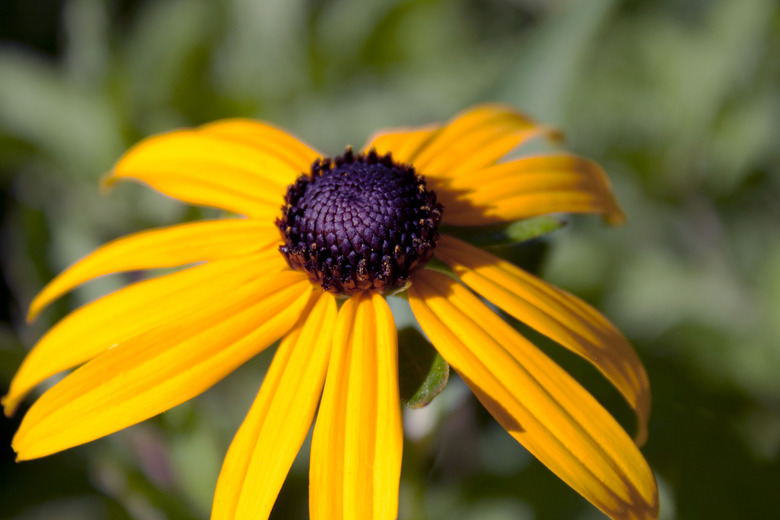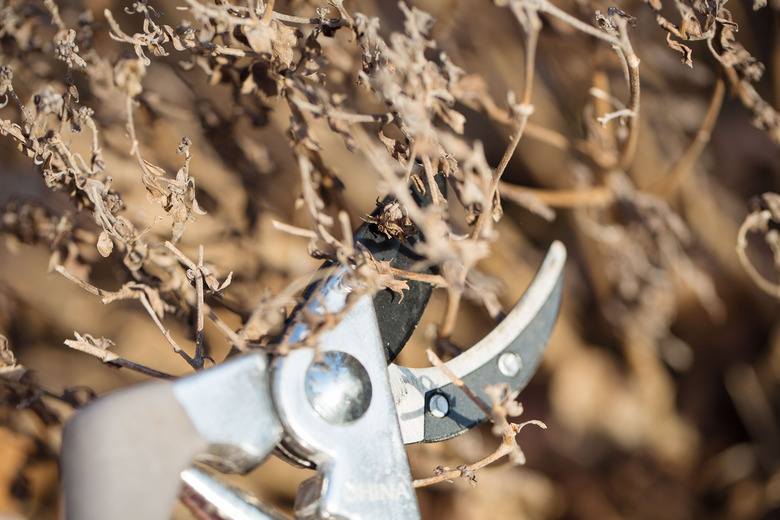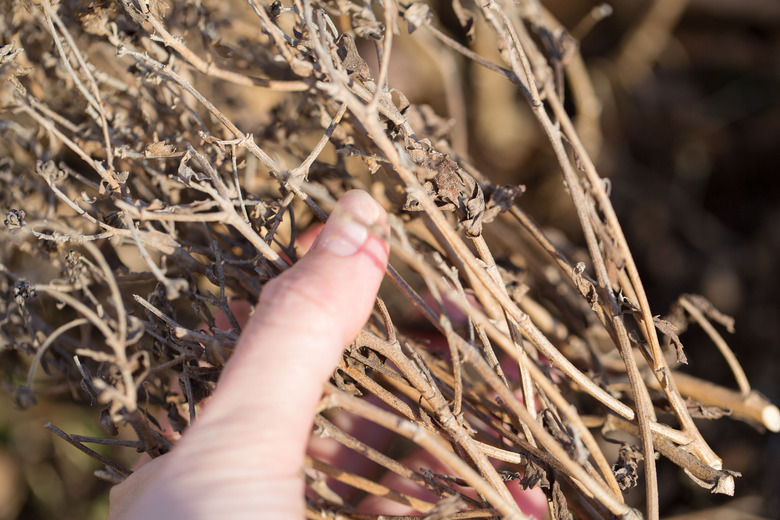How To Care For Black-Eyed Susan Perennials In Fall
Since Black-Eyed Susan perennials spend most of the fall blooming and thriving, not much fall care is necessary. These perennials are a wildflower that require little attention and can thrive in almost any conditions.
Since Black-Eyed Susan perennials spend most of the fall blooming and thriving, not much fall care is necessary. These perennials are a wildflower that require little attention and can thrive in almost any conditions. To ensure that the Black-Eyed Susans are protected during the cold winter months, covering them with mulch before the first frost is sufficient. Doing so will protect the roots of the perennial from being damaged by the cold.
Step 1
Cut back the stalks of the Black-Eyed Susan perennials in late fall, when the plant is dormant. Use gardening shears to cut the stem, but leave about 4 inches of the stem above the leaves so the plant is not harmed.
Step 2
Gather items to use for mulch, such as straw or dried leaves.
- Since Black-Eyed Susan perennials spend most of the fall blooming and thriving, not much fall care is necessary.
- To ensure that the Black-Eyed Susans are protected during the cold winter months, covering them with mulch before the first frost is sufficient.
Step 3
Cover the Black-Eyed Susan perennials with mulch in late fall. This will protect the flowers during the cold months so they will be strong in the spring.
Care Of A Black Eyed Susan Plant
Although black-eyed Susan is a moderately drought-tolerant plant, the soil should never be bone dry. Water only when the top of the soil feels dry, as Black-eyed Susan is prone to rot in muddy soil. Prevent slugs through proper maintenance of the area around the plant. Rake up leaves, wilted blooms and other plant debris to eliminate hiding places for slugs. Aphids, tiny green bugs that suck the sap from the undersides and joints of the leaves, can usually be controlled by blasting the plant with a strong stream of water. Otherwise, spray the pests regularly with an insecticidal soap spray. Dig up an entire clump and then divide it into smaller sections, each with a healthy root system. Black-eyed Susan is best divided in fall. Regular deadheading encourages black-eyed Susan to bloom prolifically all season. Without deadheading, the plant goes to seed early and blooming rapidly declines. Cut fresh black-eyed Susans for bouquets frequently.
- Cover the Black-Eyed Susan perennials with mulch in late fall.
- Aphids, tiny green bugs that suck the sap from the undersides and joints of the leaves, can usually be controlled by blasting the plant with a strong stream of water.
Things Needed
- Mulch
- Gardening shears
Warning
Do not leave mulch on perennials after April 1, or the perennials will be weak from growing under the mulch. Do not use hay for mulch because it contains weed seeds. When cutting back diseased perennials, do not compost the diseased leaves and stems. Destroy them instead.
Tip
Black-Eyed Susan perennials can provide food for birds in the fall, so you may want to wait to cut the flowers back until spring. Mulching is especially important in the first year after planting Black-Eyed Susans. Perennials need to be exposed to some cold to become hardy and strong, so wait to apply mulch until around the middle of November.
References
- Garden Guides: How to Care for Black-Eyed Susan
- The Old Farmer's Almanac: Black-Eyed Susans
- East Cherry Creek Valley Water and Sanitation District: Rudbeckia Fulgida "Goldstrum": "Black-Eyed Susan"
- The New Sunset Western Garden Book; Kathleen Norris Brenzel



